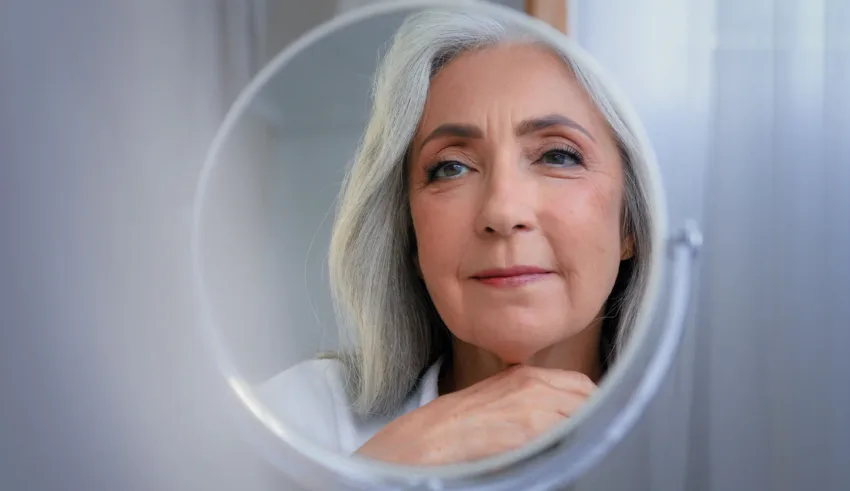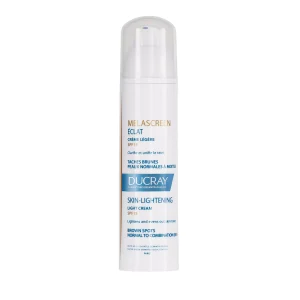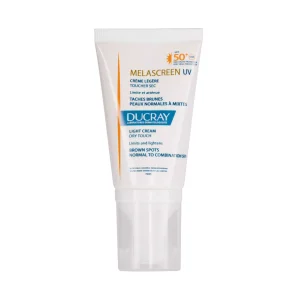
Welcome to the fascinating world of aging and pigmentation! Over time, your skin undergoes remarkable changes, reflecting the course of your life and the impact of various external and internal factors. One of the most visible signs of aging is the appearance of pigmentation irregularities, which can affect your skin tone and overall appearance.
Understanding the complex relationship between aging and pigmentation allows you to make informed choices to maintain healthy, glowing skin throughout your life. So let’s delve deeper into this fascinating topic and unlock the secrets to fighting the effects of time on your skin with the help of the dermatologist Dr. Zuhour Khalil Azizeh.
What is the science behind aging and pigmentation?
At the heart of the connection between aging and pigmentation lies the complex science of melanin, the pigment responsible for the coloration of your skin, hair, and eyes. Melanin production occurs within specialized skin cells called melanocytes. As you age, the functioning and distribution of melanocytes change, leading to variations in pigmentation.
According to Dr. Zuhour Khalil Azizeh, the skin undergoes many changes with age, including changes in skin pigmentation that can lead to loss of skin color and the appearance of age spots or uneven skin tone. The effects of aging on skin pigmentation are complex and can be influenced by a variety of factors, including genetics, lifestyle choices, and environmental exposure.
What are the types and causes of age-related pigmentation?
Age-related pigmentation takes many forms, each with distinct causes and characteristics. Understanding these types of pigmentation can help guide effective management strategies.
1- Sunspots
Sunspots, also known as solar lentigines, are one of the most common manifestations of age-related pigmentation. These flat, brown spots develop due to cumulative sun exposure over the years. The UV radiation from the sun triggers the overproduction of melanin in specific areas, resulting in the formation of these spots.
2- Melasma
Melasma, often referred to as the “mask of pregnancy,” is a type of hyperpigmentation that primarily affects women. It appears as irregular patches of brown or grayish pigmentation, typically on the face. Hormonal changes, such as those occurring during pregnancy or due to hormonal therapies, are significant contributors to the development of melasma.
3- Post-inflammatory hyperpigmentation
Post-inflammatory hyperpigmentation (PIH) arises as a result of injury or inflammation to the skin, such as acne breakouts, burns, or cuts. When the skin undergoes trauma, the body responds by producing excess melanin in the affected area, leading to localized darkening.
Dr. Zuhour Khalil Azizeh adds that in some cases, aging can cause a loss of pigmentation in the skin (hypopigmentation), resulting in white or lighter areas on the skin.
The complex relationship: aging factors influencing pigmentation
Several factors associated with the aging process contribute to changes in pigmentation patterns. Understanding these influences can shed light on the complex relationship between aging and pigmentation.
Hormonal changes play a vital role in pigmentation alterations. Fluctuations in hormone levels, particularly estrogen, can influence melanocyte activity, leading to the appearance of pigmentation irregularities. This is evident in conditions like melasma, where hormonal shifts during pregnancy or menopause can trigger pigmentation changes.
Environmental factors also exert a significant influence on pigmentation as we age. Chronic exposure to pollution, such as airborne toxins, can induce oxidative stress and inflammation, thereby affecting melanocyte function and contributing to the development of pigmentation issues.
Additionally, lifestyle choices and habits can impact pigmentation. Excessive sun exposure without proper sun protection can accelerate the formation of sunspots and exacerbate existing pigmentation concerns. Smoking, poor nutrition, and high levels of stress can also disrupt the delicate balance of melanin production and distribution in the skin.
According to Dr. Zuhour Khalil Azizeh, genetics may play a role in age-related changes in pigmentation. The amount and type of melanin produced by a person’s skin are largely determined by their genetic makeup, which can influence how the skin responds to various environmental factors. She gives the example of people with darker skin tending to produce more melanin than those with lighter skin, which can offer some protection against sun damage and age-related changes in pigmentation. However, even people with darker skin can develop age spots and other types of hyperpigmentation as they age.
Strategies for managing and preventing pigmentation as you age
Developing a comprehensive skincare routine tailored to address pigmentation concerns is crucial. Dr. Zuhour Khalil Azizeh states that ingredients such as hydroquinone, retinoids, vitamin C, niacinamide, and kojic acid have shown promise in reducing hyperpigmentation.
Dr. Zuhour Khalil Azizeh discusses their benefits in detail:
- Hydroquinone: This skin-brightening agent can be very effective in reducing the appearance of age spots and other types of hyperpigmentation.
- Retinoids: These vitamin A derivatives can help increase cell turnover and stimulate collagen production, resulting in brighter, more even skin.
- Vitamin C: This powerful antioxidant can help brighten skin and reduce the appearance of dark spots and uneven skin tone.
- Niacinamide: This form of vitamin B3 has been shown to reduce the appearance of hyperpigmentation and improve skin texture.
- Kojic Acid: This natural ingredient is derived from fungi and may help inhibit melanin production, resulting in a lighter, more even skin tone.
Here are 2 creams that contain active depigmenting ingredients and are ideal for reducing and unifying skin tone.
Ducray Melascreen Depigmenting Intensive Care
Ducray Melascreen Eclat Light Cream SPF15
Dr. Zuhour Khalil Azizeh notes that when using skincare products to reduce pigmentation, it is important to use them regularly and combine them with other healthy skin habits, such as wearing sunscreen and avoiding excessive sun exposure.
Consistent sun protection is paramount in managing pigmentation. Applying broad-spectrum sunscreen with a high sun protection factor (SPF) and seeking shade during peak sun hours can prevent further UV-induced pigmentation changes. Additionally, wearing protective clothing, hats, and sunglasses offers additional defense against harmful sun rays.
We recommend the following sunscreen that may work best for you and help correct existing dark spots.
Ducray Melascreen UV Light Cream SPF50+
Dr. Zuhour Khalil Azizeh adds that there are several preventative measures to minimize age-related pigmentation changes. She advises avoiding harsh skin care products, such as those containing alcohol or other drying agents, which can damage the skin and lead to pigmentation changes. You should also stay hydrated as drinking plenty of water can help keep skin hydrated and healthy, which can reduce the risk of pigmentation changes.
Conclusion
As we conclude our exploration of the exciting field of aging and pigmentation, let’s remember that true beauty goes beyond appearances. By understanding the mysteries surrounding this topic, you gain the power to make informed choices, embrace your individuality, and care for your skin with compassion. With each passing year, we can continue to light the path to radiant, confident aging, which is a sign of self-love and acceptance.











